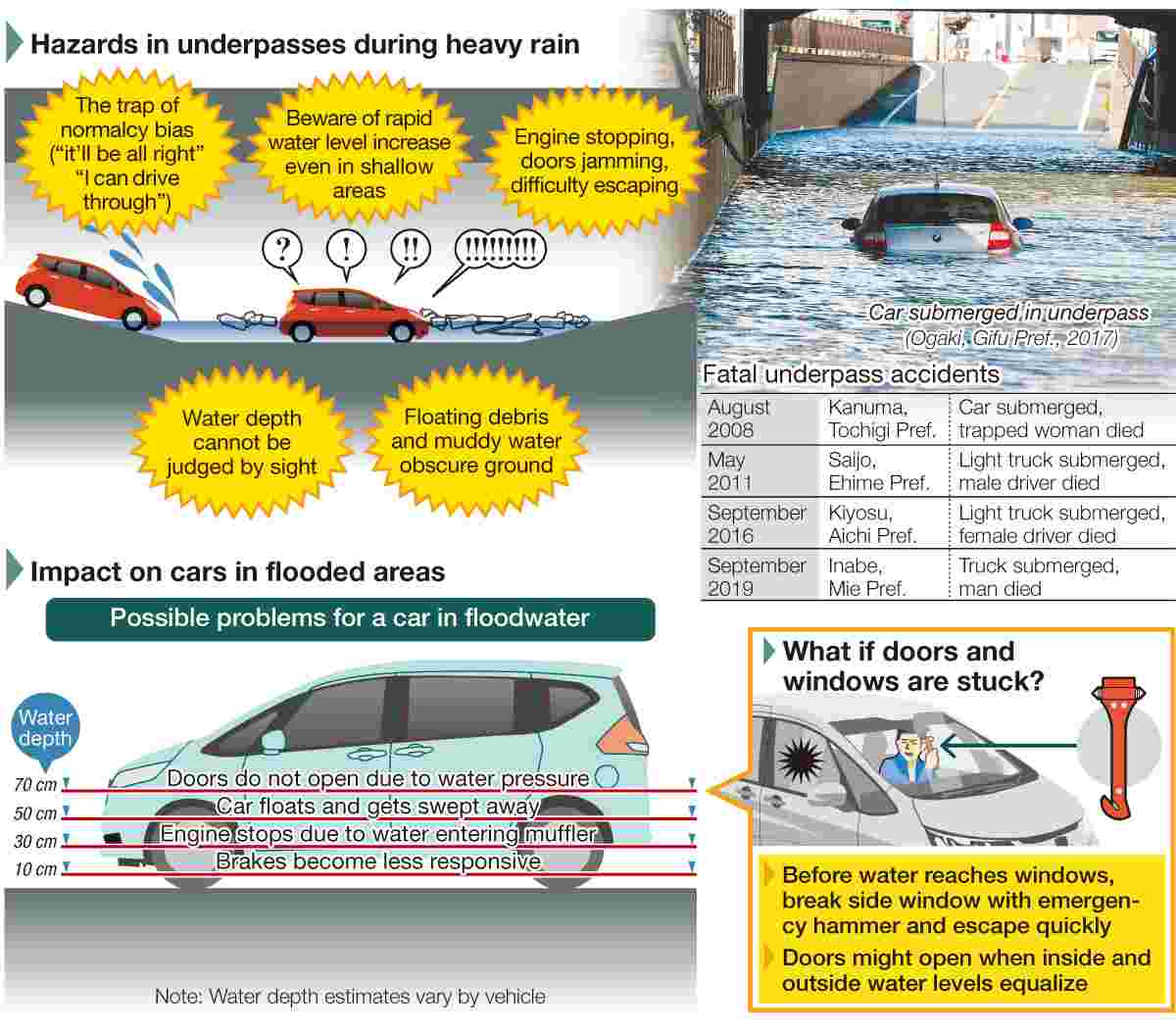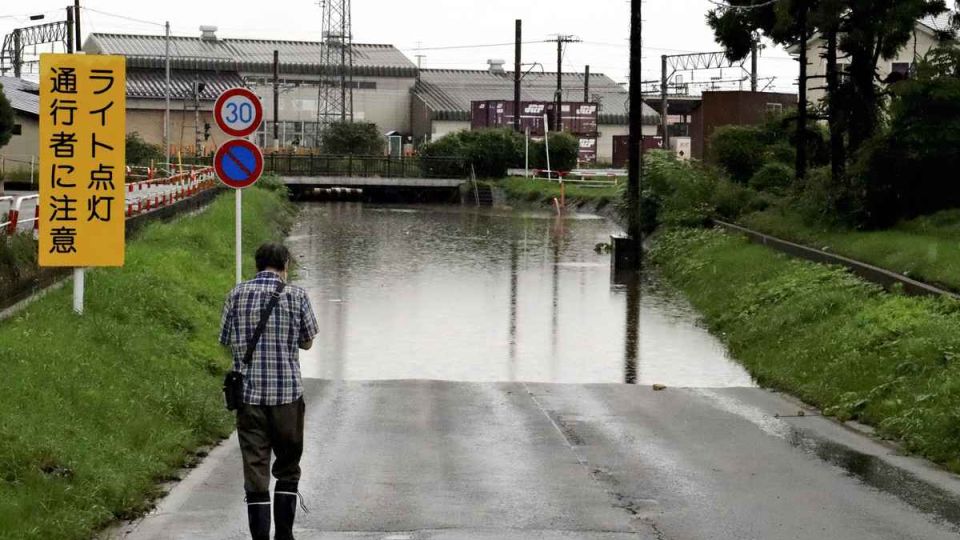May 23, 2025
TOKYO – Drivers should exercise caution when road flooding is anticipated due to localized heavy rain or typhoons. In particular, underpasses which pass beneath railway tracks and other infrastructure are particularly susceptible to rapid water level increases. It is crucial to understand how to escape should your vehicle become submerged and immobilized.
As of 2022, the Land, Infrastructure, Transport and Tourism Ministry reports that there are around 3,700 underpasses nationwide, constructed beneath railways and expressways.
Because underpasses have sloped entrances and exits with a central area lower than the surrounding ground, they are prone to rapid flooding from heavy rain. Flooding can occur even without official weather alerts. Due to atmospheric instability, heavy rainfall is also possible in spring, requiring vigilance.
Yoshiki Kaneko, a certified safety adviser with the Japan Automobile Federation (JAF) at a Tokyo branch, highlighted the deceptive nature of flooded underpasses, saying: “You cannot easily tell how deep the water is just by looking. Often, you only discover the depth once you are already driving through it.”
He stressed that “normalcy bias” — the thought that “this will be fine” — can be particularly dangerous, potentially leading to your car becoming stuck and inoperable in deep water.
Water depths as low as 10 centimeters can hinder braking in some vehicles, and at 30 centimeters or more, electrical systems are susceptible to failure. Moreover, water entering the muffler or air intake can lead to engine shutdown. The car may even float or become inoperable.
In the past, there have been incidents where cars have become submerged in flooded roads, including underpasses, leading to fatal accidents. The JAF urges people not to drive on flooded roads.
Learn how to escape from car

GRAPHICS: THE YOMIURI SHIMBUN
Recognizing flood-prone roads in advance is crucial. Prof. Makoto Takeda, an expert in urban water disasters at Chubu University, advises residents to identify potential flooding spots near their homes during heavy rain and plan alternative routes.
To aid in this, the ministry and other organizations have published road flood caution area maps online for various regions. During heavy rain, it is essential to avoid underpasses and consider safe evacuation methods. For example, should the closest evacuation facility be located beyond an underpass, it would be advisable to an alternative route or proceed to an alternative shelter situated on higher terrain.
In the event of vehicle submersion, ensure preparedness by understanding escape procedures.
The JAF emphasizes the importance of keeping a pointed emergency escape hammer and seatbelt cutter within the driver’s reach. If trapped in a flooded underpass during heavy rain, the JAF advises to stop the engine, unfasten seatbelts, and escape through a window if doors will not open due to water pressure. If neither doors nor windows can be opened, use the hammer to break a side window.
Murky water makes it hard to see where you’re stepping, so move slowly, testing each step, until you reach safety.
“It is important to understand the dangers of driving during heavy rain and on flooded roads, and to act calmly,” Takeda said.

